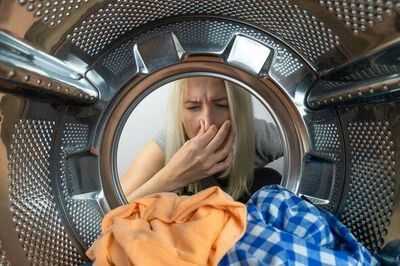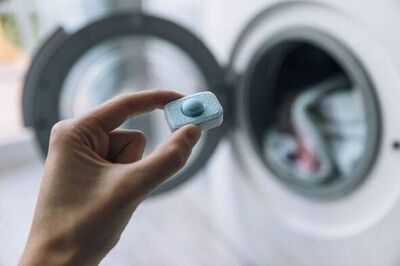If your clothes still have a whiff about them and don't seem properly cleaned after a wash, it could be that your washing machine has developed a mould problem. But fear not, as this issue is easy and quick to sort out.
The rubber seal around the door of a washing machine often traps moisture, soap residue, and bacteria, making it crucial to leave the door slightly open after use.
When you start to see gunk building up within the rubber seal, this is an indication of mould, which could affect the cleanlinessof your clothes and the integrity of the washing machine's seal, potentially causing leaks.
- Substitute teacher 'video calls pupil while naked in shower to arrange sex'
- Jennifer Aniston's 29p superfood lunchtime 'secret' to keeping youthful glow
Experts at Anderson James have shared a nifty trick, revealing that dishwasher tablets are the secret weapon for removing any mouldy build-up inside your washing machine door, reports the Express.

They explained: "Dishwasher tablets are designed to tackle tough grease, grime, and food residue in dishwashers, making them equally effective at cutting through detergent build-up, dirt, and mould in your washing machine.
"These tablets contain powerful cleaning agents that dissolve grime, break down stubborn residues, and deodorise surfaces, making them a great option for maintaining your washing machine."
Using dishwasher tablets to clean your washing machine might sound strange, but thanks to their strong detergents, they're capable of dissolving mould and grease that can stick to the seal.
These tablets, packed with ingredients that sanitise dishes, can also combat bacteria and prevent the return of mould spores.
To thoroughly clean your washing machine door, first make sure your washing machine is emptied of any clothes.

Simply drop one dishwasher tablet into the drum of the machine where you'd usually put laundry. Choose the highest heat and longest wash cycle your machine provides, start it up and let the washer finish the full cycle.
An expert shared: "The heat will help the dishwasher tablets break down any stubborn grime and build-up. This also helps disinfect the interior of the machine, killing any bacteria or mould."
One kitchen staple cleans skirting boards and leaves them 'gleaming'
Remove limescale with 2 household ingredients 'stronger than vinegar'
Once the cycle is finished, use some warm water along with a fresh cloth to wipe out the rubber seals, ensuring all residue and mould are completely removed. Your rubber seal should now be immaculate and free from any mould.
Regular upkeep, cleaning your washing machine door seal every one to three months, can fend off any future growth of mould or bacteria.
You may also like

'He doesn't give a...': Canada ex-PM Justin Trudeau trolled after shirtless, kissing photo with Katy Perry goes viral; 'One pretended to be an astronaut'

Babil Khan returns to Instagram, admits he was battling depression: 'My demons left me...'

All Creatures Great and Small star on 'departure' with exciting new project

Suresh Gopi offers to step down, wants Sadanandan Master to replace him in union cabinet

Assam CM Sarma claims Muslim population in State has risen to 39.5%, backs Centre's 'Detect, Delete, Deport' demography mission






